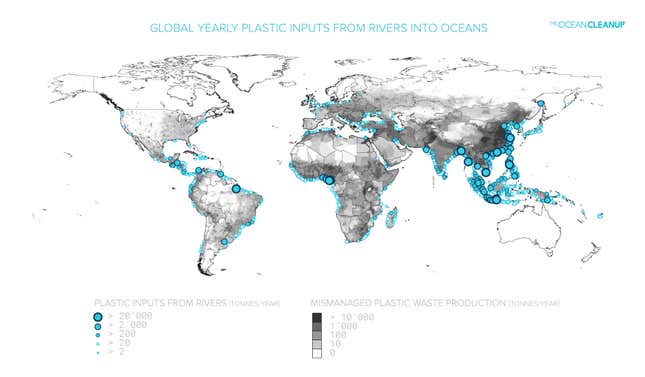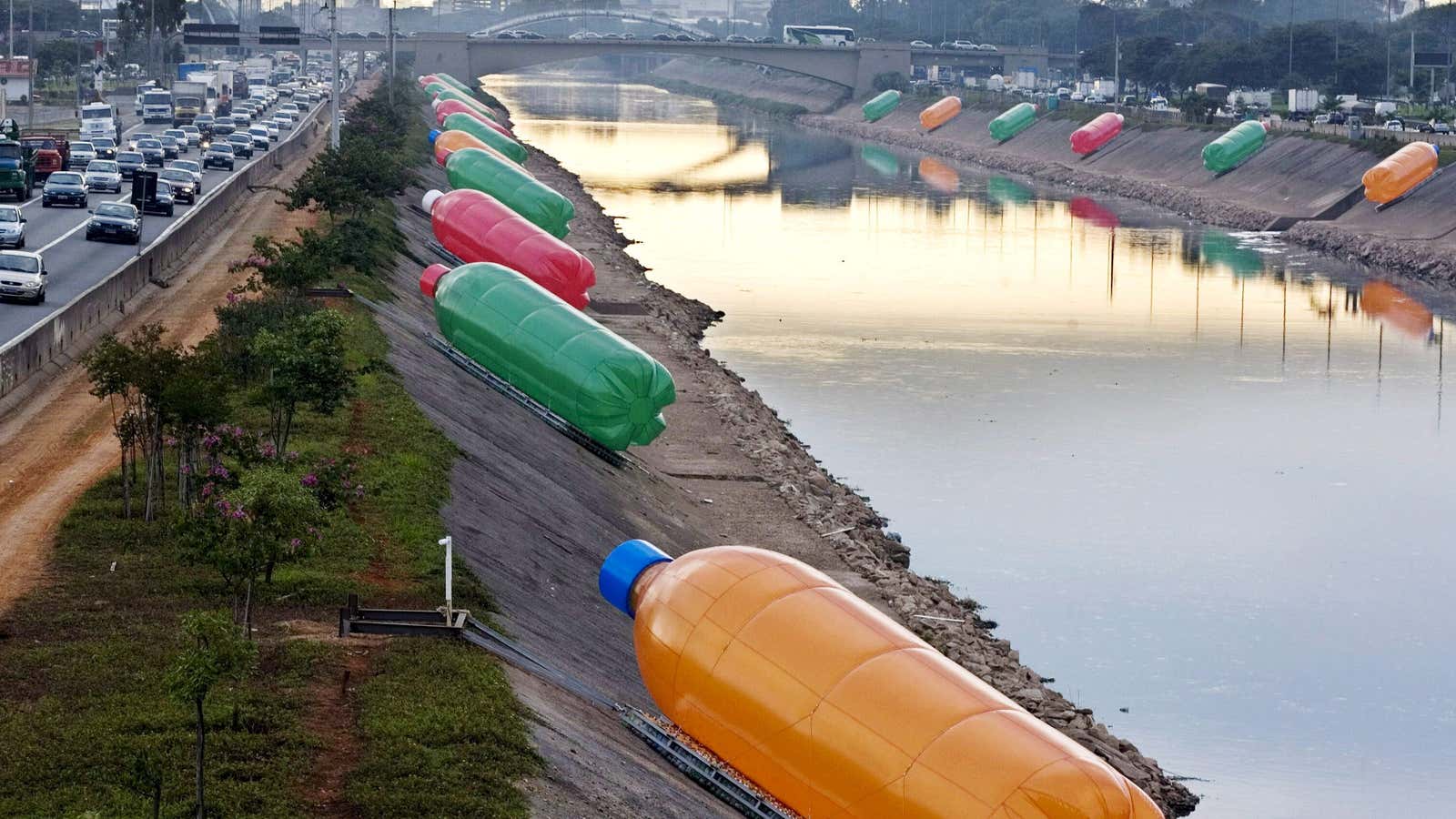Every year, millions of tonnes of plastics are produced and trashed, with some ending up in the sea, and gobbled up by tiny fish. Even though countries don’t report on how much plastic they are flushing, a recent study suggests that around 86% of the plastic running through rivers was coming from a single continent—Asia.
An estimated 1.15 to 2.41 million tonnes (1.27 to 2.66 million metric tons) of plastic waste enters rivers every year, around one-fifth of the total plastic in the sea from coastal populations worldwide, according to a study published in Nature on June 7. (Other plastic ends up in landfills which can also “leak” into the oceans.) The researchers from Ocean Cleanup, a Netherland-based foundation working to extract plastic from the sea, found that a majority of the inputs are from Asian countries like China, Indonesia, and Myanmar.
Seven of the top 20 rivers from all continents, which originate or pass through China’s major cities, are contributing around two thirds (67%) of plastic released through rivers into the oceans. The Yangtze River that runs through Shanghai, one of China’s most populous areas, tops the list, followed by Ganges, a trans-boundary river that runs through northern India and Bangladesh. Next is Xi River, the western tributary of the Pearl River, a major water source for the 100 million people residing in Guangdong Province, China’s most populous province.
The Dutch researchers found that the Yangtze river’s mouth, where the conduit meets the sea, had a plastic concentration of 4,137 particles per cubic meter—and contributed 20,000 tonnes (22,046 metric tons) of plastic every year to the oceans. In December, two ships dumped more than 100 tonnes (110 metric tons) of waste such as needles and plastic tubes into the Yangtze river.

The study echoes earlier research on how plastic enters the ocean, says professor Daniel Hoornweg, an energy systems professor at University of Ontario Institute of Technology, who was not involved in the study. Ocean plastic levels depend on the amount of waste production, wind or rivers carrying plastic into the oceans, and the quality of urban waste collections.
Although Asia generates relatively little waste per person, especially compared to the consumer-oriented West, the total waste generated by the continent adds up.
China, for example, manufactured the most plastic products—around 74.7 metric tons—in 2015, according to the 2016 report by Plastics Europe, a trade association that tracks the plastics industry. It’s followed by 49.8 metric tons from Canada, Mexico, and the US combined. China began charging consumers (link in Chinese) for plastic usage in 2008 to fight against pollution. The country’s booming delivery industry, fueled by e-commerce, is often not recyclable. For example, last year delivery companies used 12 billion plastic bags (link in Chinese).
